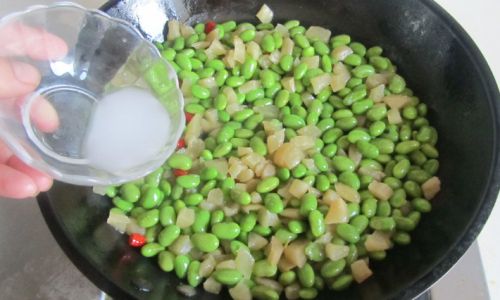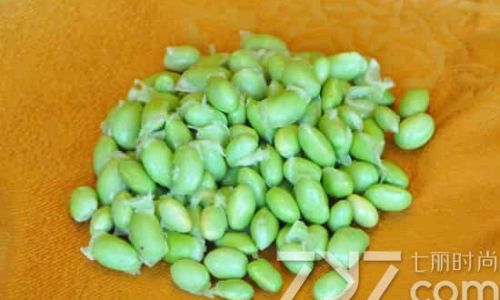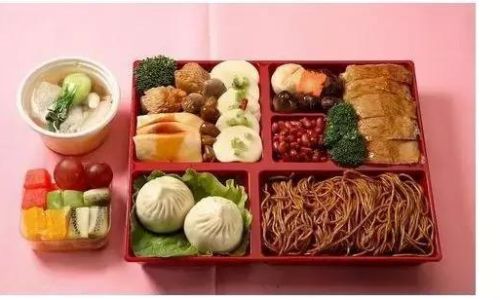Table of content
Introduction
Green edamame beans, also known as soybeans in their early, tender stage, are a delightful and nutritious addition to any meal. Their sweet, fresh flavor and crisp texture make them a favorite among health-conscious individuals and food enthusiasts alike. However, like many perishable vegetables, fresh edamame beans have a limited shelf life. To extend their enjoyment beyond their natural harvest season, proper preservation techniques are essential. This comprehensive guide will walk you through various methods of preserving green edamame beans, ensuring you can savor their deliciousness year-round.
Understanding Edamame Beans
Before diving into preservation methods, it’s crucial to understand the basics of edamame beans. Edamame (Glycine max) are young soybeans harvested before they fully mature and dry out. They are typically sold in pods, which are steamed or boiled and then eaten with the beans inside. Edamame beans are rich in protein, fiber, vitamins, and minerals, making them a valuable addition to a balanced diet.
When selecting edamame beans for preservation, look for pods that are bright green, firm, and free of bruises or spots. The beans inside should be plump and evenly colored. Freshness is key; the sooner you can process and preserve your edamame beans after harvest, the better the final quality will be.
Freezing Edamame Beans
Freezing is one of the most popular and effective methods of preserving green edamame beans. It allows you to retain the beans’ fresh flavor, texture, and nutritional value for several months. Here’s a step-by-step guide to freezing edamame beans:

Preparation
-
Harvest or Purchase Fresh Beans: Start with the freshest edamame beans possible. If you’re harvesting from your garden, pick the pods early in the morning when temperatures are cooler.
-
Inspect and Sort: Remove any pods that are damaged, discolored, or have begun to dry out.
-
Blanching: Blanching is a crucial step in freezing edamame beans. It stops the enzymatic action that can cause the beans to lose quality and color. Bring a large pot of water to a rolling boil. Add a small amount of salt (optional) to the water. Prepare an ice water bath in a large bowl or sink.
-
Shell the Beans: Snap off the ends of the pods and pull the beans out. You can also use a knife to cut the pods open lengthwise and remove the beans.
-
Blanch the Beans: Drop the beans into the boiling water and cook for 2-3 minutes. Use a slotted spoon or strainer to quickly transfer the beans to the ice water bath. Let them sit for a few minutes until completely cooled.
-
Dry the Beans: Drain the beans well and pat them dry using clean paper towels or a clean kitchen towel. Removing excess moisture is essential to prevent freezer burn.
Freezing
-
Single-Layer Freezing: Spread the dried beans in a single layer on a baking sheet lined with parchment paper. Place the sheet in the freezer for 2-3 hours until the beans are frozen solid. This step helps prevent the beans from clumping together when stored in freezer bags.
-
Storage: Once the beans are frozen, transfer them to airtight freezer bags or containers. Label the bags with the date and contents. Edamame beans can be stored in the freezer for up to one year.
Thawing and Using Frozen Edamame Beans
To use frozen edamame beans, thaw them overnight in the refrigerator or place them in a colander and run cold water over them until they are thawed. You can also cook them directly from frozen, adding a few extra minutes to the cooking time.
Canning Edamame Beans
Canning is another effective way to preserve edamame beans, although it tends to alter their texture and flavor slightly compared to freezing. However, canned edamame beans can be a convenient option for long-term storage and use in cooked dishes.
Preparation
-
Harvest and Inspect: Follow the same steps for harvesting and inspecting fresh edamame beans as outlined in the freezing section.
-
Shell the Beans: Remove the beans from the pods.
-
Prepare the Canning Jars: Wash the jars, rings, and lids thoroughly in hot, soapy water. Rinse well and sterilize the jars by immersing them in boiling water for at least 10 minutes. Keep the jars hot until you are ready to fill them.
Canning Process
-
Pack the Beans: Fill the hot, sterile jars with edamame beans, leaving a headspace of 1 inch at the top.
-
Add Water or Brine: You can either add boiling water to cover the beans or create a brine solution by mixing 1 tablespoon of salt per quart of water. Pour the water or brine over the beans, leaving the same 1-inch headspace.
-
Wipe the Jars: Use a clean, damp cloth to wipe the rims of the jars to remove any food residue.
-
Seal and Process: Place the lids on the jars and secure them with the rings. Process the jars in a pressure canner according to the manufacturer’s instructions for low-acid foods. For quarts, this typically involves processing at 10 pounds of pressure for 90 minutes. For pints, reduce the processing time to 75 minutes.

-
Cool and Store: After processing, allow the jars to cool naturally. Once they are completely cool, check for seals by pressing the center of each lid. If the lid does not spring back, the jar is not sealed and should be refrigerated and used immediately. Properly sealed jars can be stored in a cool, dark place for up to one year.
Drying Edamame Beans
Drying edamame beans transforms them into a shelf-stable product that can be stored for long periods. However, note that dried edamame beans will have a different texture and flavor profile compared to fresh or frozen beans, making them more suitable for cooked applications like soups, stews, and bean salads.
Preparation
-
Harvest and Inspect: As with other preservation methods, start with fresh, high-quality edamame beans.
-
Shell the Beans: Remove the beans from the pods.
-
Soak (Optional): Some people prefer to soak the beans overnight in water before drying to help remove some of their natural gases and soften them slightly. However, soaking is not strictly necessary.
-
Rinse and Drain: If you soaked the beans, drain and rinse them well. If not, simply rinse them under cold water.
Drying Process
-
Air Drying: Spread the beans in a single layer on clean, dry trays or screens. Place the trays in a well-ventilated area away from direct sunlight. Allow the beans to dry slowly, stirring them occasionally to ensure even drying. This method can take several days to a week depending on the humidity and temperature.
-
Dehydrator: Using a food dehydrator is a faster and more controlled way to dry edamame beans. Set the dehydrator to a temperature of around 115-135°F (46-57°C). Spread the beans in a single layer on the dehydrator trays. Dry for 8-12 hours, stirring occasionally. The beans are done when they are completely dry and brittle.
-
Oven Drying: As a last resort, you can also dry edamame beans in a conventional oven set to its lowest temperature (usually around 150°F or 65°C). Spread the beans on baking sheets and prop the oven door open slightly with a wooden spoon to allow moisture to escape. Dry for several hours, stirring occasionally. Be cautious of over-drying, which can make the beans brittle and prone to breaking.
Storage
Once the beans are fully dried, store them in airtight containers in a cool, dark place. Dried edamame beans can be stored for up to one year.
Pickling Edamame Beans
Pickling is a preservation method that involves immersing food in a vinegar-based brine to create a tangy, acidic environment that inhibits the growth of harmful bacteria. Pickled edamame beans can add a unique flavor to salads, sandwiches, and other dishes.
Preparation
-
Harvest and Inspect: Start with fresh edamame beans.
-
Shell the Beans: Remove the beans from the pods.
-
Blanching: Blanch the beans in boiling water for 2-3 minutes, then transfer them to an ice water bath to stop the cooking process. Drain and pat dry.
Pickling Process
-
Prepare the Pickling Brine: Combine equal parts vinegar and water (e.g., 1 cup vinegar to 1 cup water). Add sugar, salt, and spices to taste (common spices for pickling include garlic, dill, mustard seeds, and red pepper flakes). Heat the brine until the sugar and salt are dissolved, then let it cool to room temperature.






0 comments